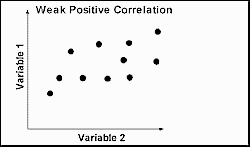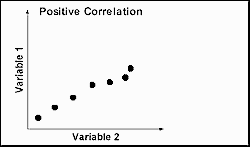Data Presentation: Scatter Graphs
Scatter graphs are used to investigate the relationship between two variables (or aspects) for a set of paired data. The pattern of the scatter describes the relationship as shown in the examples below. Best-fit or trend lines should:
-
Follow the trend of the data
-
Join as many points as possible
-
Leave an equal number of unconnected points on either side.
Rollover the scatter graphs below to see the lines of best-fit.
|
||||
|
Example: Price changes of a convenience item along an environmental gradient in El Raval, Barcelona. The hypothesis tested is that prices should decrease with distance from the key area of gentrification surrounding the Contemporary Art Museum. The line followed is Transect 2 in the map below, with continuous sampling of the price of a small bottle water at every convenience store.
|
Map to show the location of environmental gradients for transect lines in El Raval, Barcelona
| Distance along transect from Contemporary Art Museum | Price of a small bottle of water (euros) |
|---|---|
| 1 | 1.80 |
| 2 | 1.20 |
| 3 | 2.00 |
| 4 | 1.00 |
| 5 | 1.00 |
| 6 | 1.20 |
| 7 | 0.80 |
| 8 | 0.60 |
| 9 | 1.00 |
| 10 | 0.85 |
Example of a scatter graph for the above data, with the line of best-fit to be drawn.
Spearman's Rank Correlation Coefficient is a further technique for analysing this data set and is illustrated in the Statistical Techniques section
Scatter graphs can be generated online for download from our Spearman's Rank Correlation Coefficient Calculator: Spearman's Rank Correlation Coefficient Calculator or Scatter Graph Creator






